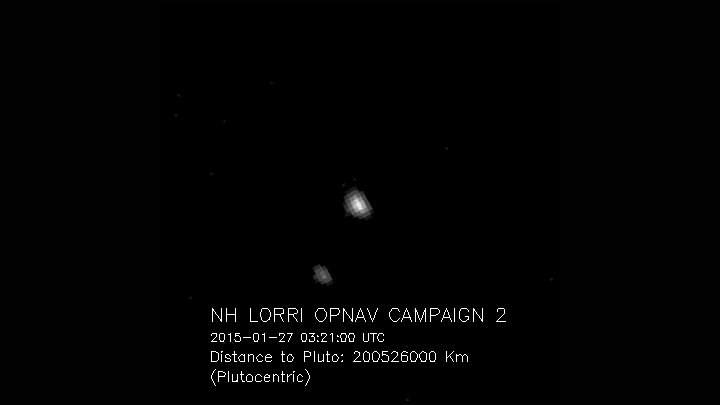TORONTO – NASA has given Pluto discoverer Clyde Tombaugh, who died in 1997, a posthumous birthday gift: new images of Pluto.

The New Horizons spacecraft is on its way to Pluto, once considered the ninth planet of our solar system. The tiny world was reclassified as a dwarf planet by the International Astronomical Union in 2006.
READ MORE: New Horizons spacecraft awakens, ready to shed light on far-off Pluto
“This is our birthday tribute to Professor Tombaugh and the Tombaugh family, in honor of his discovery and life achievements — which truly became a harbinger of 21st century planetary astronomy,” said New Horizons Principal Investigator Alan Stern, from the Southwest Research Institute, Boulder, Colorado in a press release.
Clyde Tombaugh discovered Pluto in 1930.

Get daily National news
The new images were acquired with the spacecraft’s Long-Range Reconnaissance Imager (LORRI) on Jan. 25 and 17.
New Horizons is moving almost 50,000 kilometres per hour and has already covered more than 6 billion kilometres since it was launched on Jan. 19, 2006 (a mere days before Pluto’s demotion).
READ MORE: One year from now we will know some very cool things about Pluto
Due to its enormous distance from Earth, little is know about Pluto. It’s believed that the dwarf planet has a rocky core that is surrounded by water ice, as well as a thin atmosphere.
“My dad would be thrilled with New Horizons,” said Annette Tombaugh, Clyde Tombaugh’s daughter, of Las Cruces, New Mexico. “To actually see the planet that he had discovered and find out more about it, to get to see the moons of Pluto … he would have been astounded. I’m sure it would have meant so much to him if he were still alive today.”
New Horizons will make its closest approach to Pluto on July 14. It will not orbit the icy world.



Comments